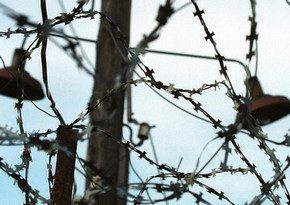What are the piano keys called?
In this article we will get acquainted with the keyboard of the piano and other keyboard musical instruments. You will learn about the names of the piano keys, what an octave is, and how to play a sharp or flat note.
As you know, the number of keys on a piano is 88 (52 white and 36 black), and they are arranged in a certain order. First of all, what has been said applies to the black keys: they are arranged according to the alternating principle – two, three, two, three, two, three, etc. Why is this so? – for the convenience of the game and for ease of navigation (orientation). This is the first principle. The second principle is that when moving across the keyboard from left to right, the pitch of the sound increases, that is, low sounds are in the left half of the keyboard, high sounds are in the right half. When we touch the keys in a row, we seem to climb the steps from low sonorities to an increasingly higher register.
The white keys of the piano are also called the 7 main notes – . This “set” of keys is repeated throughout the keyboard several times, each repetition is called octave. In other words, octave – this is the distance from one note “” to the next (you can move the octave both up and down). All other keys () between the two are included in this octave and are placed inside it.
Where is the note?
You have already realized that there is not only one note on the keyboard. Remember that the black keys are arranged in groups of two and three? So, any note is adjacent to a group of two black keys, and is located to the left of them (that is, as if in front of them).
Well, count how many notes are on the keyboard of your instrument? If you are at the piano, then there are already eight of them, if you are at the synthesizer, then there will be fewer. They all belong to different octaves, we’ll figure that out now. But first, look – now you know how to play all the other notes:
You can come up with some convenient guidelines for yourself. Well, for example, like this: a note to the left of three black keys, or a note between two black keys, etc. And we’ll move on to octaves. Now let’s count them. A full octave must contain all seven basic sounds. There are seven such octaves on the piano. At the edges of the keyboard we don’t have enough notes in the “set”: at the bottom there is only and, and at the top there is only one note – . These octaves, however, will have their own names, so we will consider these pieces to be separate octaves. In total, we got 7 full octaves and 2 “bitter” octaves.
Octave names
Now about what octaves are called. They are called very simply. In the center (usually directly opposite the name on the piano) is first octave, will be higher than her second, third, fourth and fifth (one note in it, remember, right?). Now from the first octave we move down: to the left of the first is small octave, further great, counter octave и subcontra octave (this is where the white keys and ).
Let’s look again and remember:
So, our octaves repeat the same set of sounds, only at different heights. Naturally, all this is reflected in the musical notation. For example, compare how the notes of the first octave are written and how the notes in the bass clef for the small octave are written:
Probably, the question has long been overdue: why are black keys needed at all, not just for navigation? Of course. Black keys are also played, and they are pressed no less often than white ones. So what’s the deal? The thing is this: in addition to the note steps (these are the ones that we just played on the white keys), there is also one – they are located mainly on the black keys. Black piano keys are called exactly the same as white ones, only one of two words is added to the name – or (for example, or). Now let’s figure out what it is and what it is.
How to play sharps and flats?
Let’s consider all the keys that are included in any octave: if you count black and white together, it turns out that there are 12 of them in total (7 white + 5 black). It turns out that the octave is divided into 12 parts (12 equal steps), and each key in this case is one part (one step). Here, the distance from one key to the closest neighboring one is semitone (it doesn’t matter where the semitone is placed: up or down, between two white keys or between a black and white key). So, an octave consists of 12 semitones.
Diez – this is an increase in the main step by a semitone, that is, if we need to play, say, the note, then we press not the key, but the note that is a semitone higher. – adjacent black key (to the right of the key).
flat has the opposite effect. flat – This is a lowering of the main step by a semitone. If we need to play, for example, then we do not play the white “”, but press the adjacent black key, which is below this one (to the left of the key).
Now it is clear that each black key is either a sharp or a flat of one of the neighboring “white” notes. But the sharp or flat does not always occupy the black key. For example, between such white keys as or not black ones. And then how to play?
It’s very simple – everything follows the same rule: Let me remind you that – this is the shortest distance between any two adjacent keys. This means that in order to play, we go down a semitone – we find that the pitch coincides with the note B. Similarly, you need to play – go up a semitone: coincides with the key. Sounds that are the same in pitch but written differently are called enharmonic (enharmonically equal).
OK it’s all over Now! I think everything is clear. I just have to add something about how sharp and flat are designated in sheet music. To do this, use special icons that are written before the note that needs to be changed.
A small conclusion
In this article, we figured out what the piano keys are called, what notes correspond to each key, and how to easily navigate the keyboard. We also found out what an octave is and learned the names of all octaves on the piano. You also now know what sharp and flat are, and how to find sharps and flats on the keyboard.
The piano keyboard is universal. Many other musical instruments are equipped with similar types of keyboards. This is not only a grand piano and an upright piano, but an accordion, harpsichord, organ, celesta, keyboard harp, synthesizer, etc. The records on percussion instruments – xylophone, marimba, vibraphone – are located on the model of such a keyboard.
If you are interested in the internal structure of a piano, if you are curious to know how and where the sound of this marvelous instrument comes from, then I recommend reading the article “The structure of a piano.” See you! Leave your comments below, click “Like” to share the material you found with friends and like-minded people in VKontakte, my world and Facebook.



